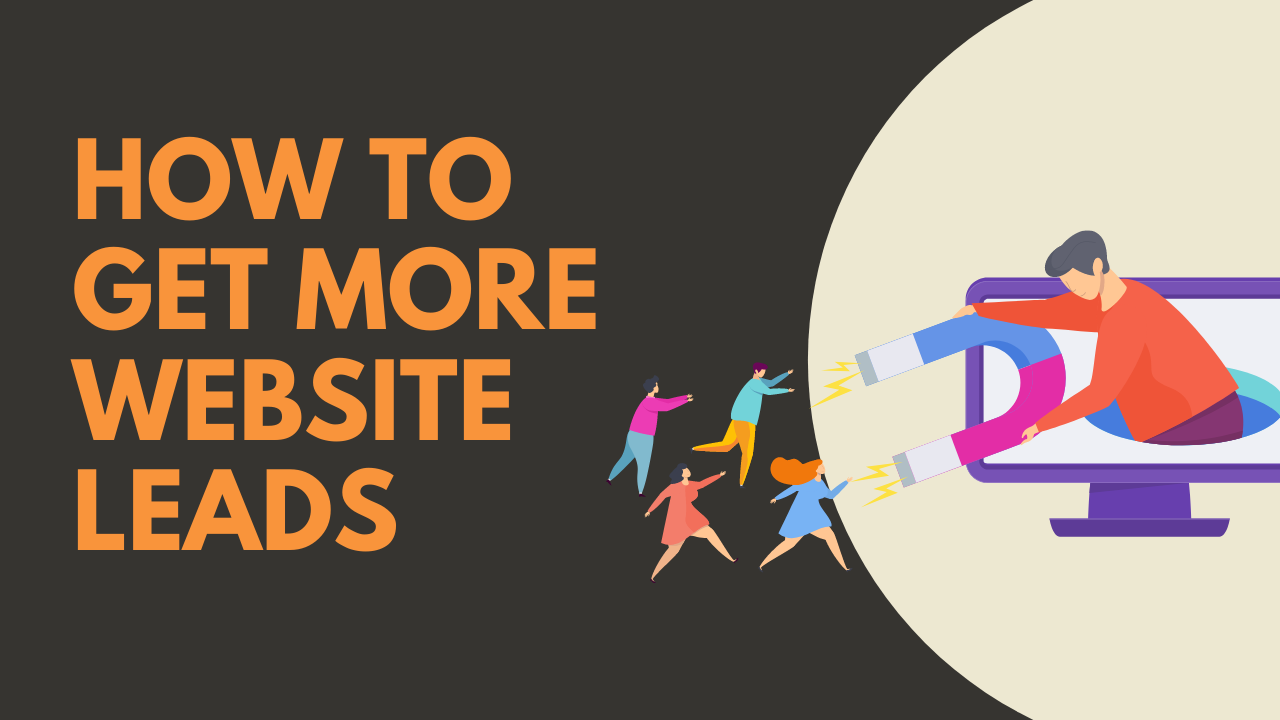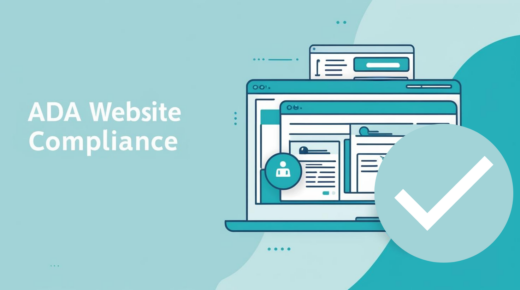Website leads are website visitors who have completed the desired action you specified in the call to action, filled out the website form with their personal and contact information, or called the phone number found on your website. That information is then used to nurture the leads or prospective customers down their buying journey until they become happy and satisfied customers of your business.
How to Get More Website Leads
The basic components needed to generate more website leads are traffic and website conversion rate:
Visitors X conversion rate = leads.
So, you need to define your target customers and drive more quality, relevant traffic into your website. It’s also important to check your website’s current lead conversion rate before making any improvement plans.
Define Your Target Customers or Leads
You have to define the type of leads you need to be able to develop the strategies that will attract them. You need to have a good understanding of your target customers to know the following:
- What incentive would motivate them to share their contact information?
- What communication method do they prefer (advertisement, email, phone call, etc.)?
- Where are they active online? Establish your presence there to attract more traffic to your website.
- What do they care or worry about related to the product or services you offer?
What’s Your Website’s Lead Conversion Rate?
Conduct an audit to determine your website traffic sources and lead conversion rate. You can use Google Analytics and other analytical tools out there. The information will help you identify problems that you must correct to reduce wasted advertising spend as well as the strategies to increase your website leads.
You can also identify the website pages that get more traffic, which means that you can design them into another lead conversion page.
Important Website Features to Get More Leads
A website designed to get more leads is visually appealing and has features or elements that will capture the visitors’ attention and convert them into leads or potential customers. Following are some of the essential features included in most website pages used for lead conversion.
Website design
First, the website should be search engine optimized. You wouldn’t want to miss the organic traffic from the search engines. The website page should be free of any features that don’t help turn your visitors into leads. They could distract your website visitors from paying attention to your message. The use of white spaces, contrasting colors and dynamic messaging also help the visitor to focus on your headline and copy. Dynamic or scrolling messaging within a specified space allows you to share a long message without reducing the designed spaces.
Compelling and targeted messages to your audience.
The message must “speak” to your website visitors. They should quickly understand the following:
- What you offer.
- How the product and service you offer can help them, state the reason why they should choose you.
- How they can get what you offer.
The headline and copy should be short and simple but can convince the visitor to immediately take the action specified in the CTA.
Learn the language
In a marketing campaign the target customers can vary in terms of location, demographics (age, education, interests, etc.) and where they are in their buying journey (awareness stage, consideration stage and decision stage). To be able to “speak” to them, the message must be written using the words, phrases and acronyms that your target customers use. For example, people in the financial, medical and other industry sectors have their own common languages. If you communicate with them in their language, your message will be more credible.
Call-to-action options
Provide call-to-action options for visitors who are not yet ready to buy or sign up. Instead of simply letting them go, try another attempt to convert them with an alternative CTA. Some examples of CTA options are “see size guides”, “free trial”, “compare models” and other links to sources of information that could help them decide to sign up or pay for your product or services.
3. Easy website navigation
Design your mobile-friendly website to have easy, user-friendly navigation. Make your navigation links easily accessible. Make social sharing easy. The visitors may not be interested in your offer but they can share it with their network of acquaintances and friends if the sharing tabs are in easily accessible locations.
4. Testimonials, reviews and other social proof.
Studies show that many customers look for testimonials and reviews before they buy products and services online. They consider the information shared by previous and current customers as reliable references about the product or services they intend to buy. Other social proofs that you can post on your website are certifications and accreditations of your expertise and quality as well as logos of your well-known customers. For some buyers, it’s risky to buy a product online without any customer review.
5. Use short videos instead of written content
Studies show that website visitors who view product videos are more likely to convert to leads over visitors who simply view a written copy.
You can use short videos to:
- Welcome visitors to your website, introduce the product or services you offer and how they can help your customers.
- Clarify some questions about your offer.
- Show important features and benefits of your product. An explainer video can present the features and benefits in ways that written information can’t match.
- Don’t forget the call to action or form to fill out beside the video.
6. Offer an irresistible lead magnet
A lead magnet can be anything you offer as an incentive to your website visitors if you want them to hand over their names, email addresses and other details that you can use to convert them into leads. To get more leads, it is important to offer an irresistible lead magnet. It should be something that the website visitor can’t ignore. The value of the lead magnet depends on the target market you want to convert. It’s important to research and test what would be irresistible and valuable to them.
Following are some of the more common lead magnets offered online:
- Ebooks, whitepapers, case studies and other digital products.
- Free product samples. This is an irresistible offer for people who don’t want to waste money on products that will turn out to be inferior or don’t meet their requirements.
- Free demos or trials of the product and services offered. For example, a company selling courses online may offer free access for a month to potential leads who will sign up. They will only start the monthly payment on the second month if they want to continue their subscription.
- Discounted price for a limited time.
Offering lead magnets that allow your potential leads to test your product or service will most likely convert your website visitors into customers.
7. Exit pop-up offer
This is another option for website visitors who were not converted into leads by your initial lead magnet. Make another offer to convert them into leads before they finally leave your website. Prominently display your phone number, email address and other contact information
The availability of your contact number in your website increases consumer trust on your offer. Even if your customers don’t actually call, they consider the availability of your phone number as the assurance that in case of any problems with your product or services, help is just a phone call away. Make it easy to find your telephone number by using bigger fonts on easy-to-find locations.
If you decide to add these contact features on your website, make sure that there is somebody to take the calls or reply to the emails. Otherwise, your company will be perceived as unreliable.
8. Add a live chat service / forum on your website.
Using a live chat tool on your lead conversion page allows you to provide personalized and timely responses to questions from visitors who are viewing your website. However, you or somebody who is knowledgeable about your lead magnet should be available to provide a quick response.
Forum
Some websites include a forum where current and potential customers can post, comment and join discussions on various topics related to the products or services you offer.
Many people consider an online forum as a good source of information about a company’s product or services they intend to buy. The wide range of discussions about various experiences in using the product or service can help potential buyers to decide if it would be suitable for their needs or not. The information would shorten or hasten the buying process. On the other hand, the company or website owner can also learn how to further improve the product or services from the discussions among forum members.
Test
Testing is the best way to know which of the website features should be on your website. By testing how your page works, you’ll know if you’re on the right track to reach your goal. Some of the important features to test are the following:
- Headline and copy
- Page layout
- Images and videos
- Call to action
- Contact forms
- Other features you have added or removed
Sometimes a small change will result in a significant increase in website lead conversion. So, keep on testing to find the best way to get more website leads.
Track Your Leads
Once you get those website leads, you can’t assume they’ll all convert to buyers on their own. You have to nurture most of your leads. Invest time and effort to research the right way to reach and nurture them. There are also on-page lead conversion programs that you can use to track leads.
Final thoughts
The website features listed above have helped other companies to have strong lead-generating websites. However, there is no assurance, without testing that they will work for your unique situation. So, continually monitor and analyze your website traffic and lead conversion rates. Try out different digital marketing strategies to see which ones bring in the best results.





